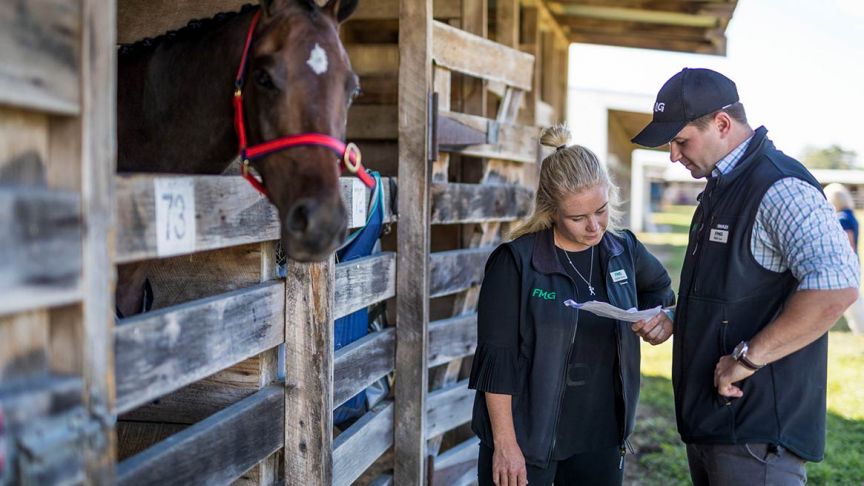Lameness, tendon and ligament injuries, ulcers and colic make up most of the claims from FMG equine policies, says FMG’s Manager Advice Services, Stephen Cantwell.
Stephen spoke with equine and production animal veterinarian, Ellie Grieves from Totally Vets Awapuni, Palmerston North, about the causes and what we can do to help protect horses from these sorts of injuries or ailments.
We get a variety of claims, but a quarter of these relate to lameness in horses. Why would we see that?
Horses have a unique physique and an innate ‘flighty’ nature.
When you look at a horse, they have this huge body mass and these tiny little legs and there’s not a lot of muscle on their legs. It’s mainly just tendons and ligaments holding the rest of the body up.
When you look at the physics of it, the load on their legs is quite remarkable compared to a human leg and the amount of muscle we have.
Lameness can result from several factors, one of which is fence injuries. Since horses are reactive animals if a fly lands on their leg for example, they may kick out and could get caught in a fence. If their leg gets caught, chances are they’ll react badly to this trying to free it—it’s their innate flight response.
The other cause of lameness can be how we ride them. If we’re asking a horse to jump or turn or gallop on cross country or be on uneven ground, there’s quite a lot of force going through those tendons and ligaments. Obviously, every tissue has a point at which it fails and sometimes they reach that point and some of those fibers give way and damage appears.
What can people do to help protect their horses from injuries that cause lameness?
Avoiding wire fencing and having well-maintained fences are both important. I often hear stories of injuries that are related to bad storms where there’s thunder and lightning and their horse has reacted badly, running though fences. Putting your horse in a stable or sheltered paddock will help to keep them calm. Luckily, these days many owners are aware of events coming up like Guy Fawkes and put their horses inside or in safer paddocks away from the fireworks.
Ulcers and colic make up around 10% of claims – what causes these in horses?
How we graze and work horses these days can play a part in them developing ulcers or colic.
Horses have evolved to graze on roughage for around 16 hours a day and their stomach constantly secretes acid to break down this roughage.
Ulcers
An ulcer can be caused by how and what a horse is eating. As their stomach produces a lot of acid to break down the 16 hours of roughage they’re designed to digest, if they’re travelling to a show or competing for example, they’re producing acid on an empty stomach which can cause an ulcer.
A second cause of ulcers can be stress. Different situations like when you’re changing their routine or taking them out to a competition is enough to make them anxious or nervous and lead to an ulcer developing.
Colic
Colic is a term used to describe abdominal pain. If a horse has been moved to a new paddock, is feeding on long, lush grass, or has recently changed feeds, they could present with colic. Having worked in Australia one thing I’ve noticed that is unique to New Zealand is that it has very good pastures—we see a lot of problems here with this lovely green grass, particularly if horses overindulge.
What are recommendations for preventing ulcers and colic?
Small, frequent feeds, lots of fibre, reducing stress, changing your feeds slowly and making sure that you’re limiting access to lush pasture is important. If a horse is going to be stabled or travelling to an event, then making sure they’ve got enough food to last them the length of time is important.
Also, making sure their teeth are done. If they can grind down their feed properly it helps with digestion and stops blockages.
